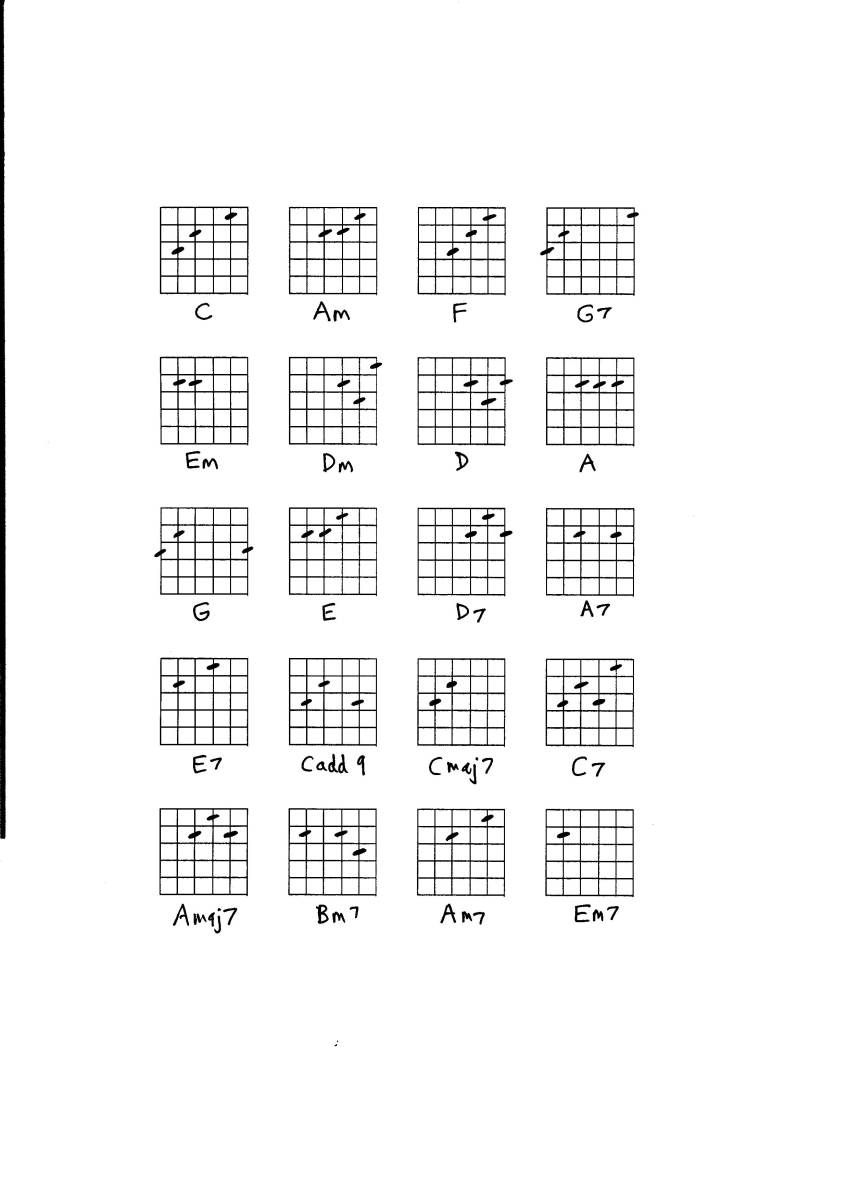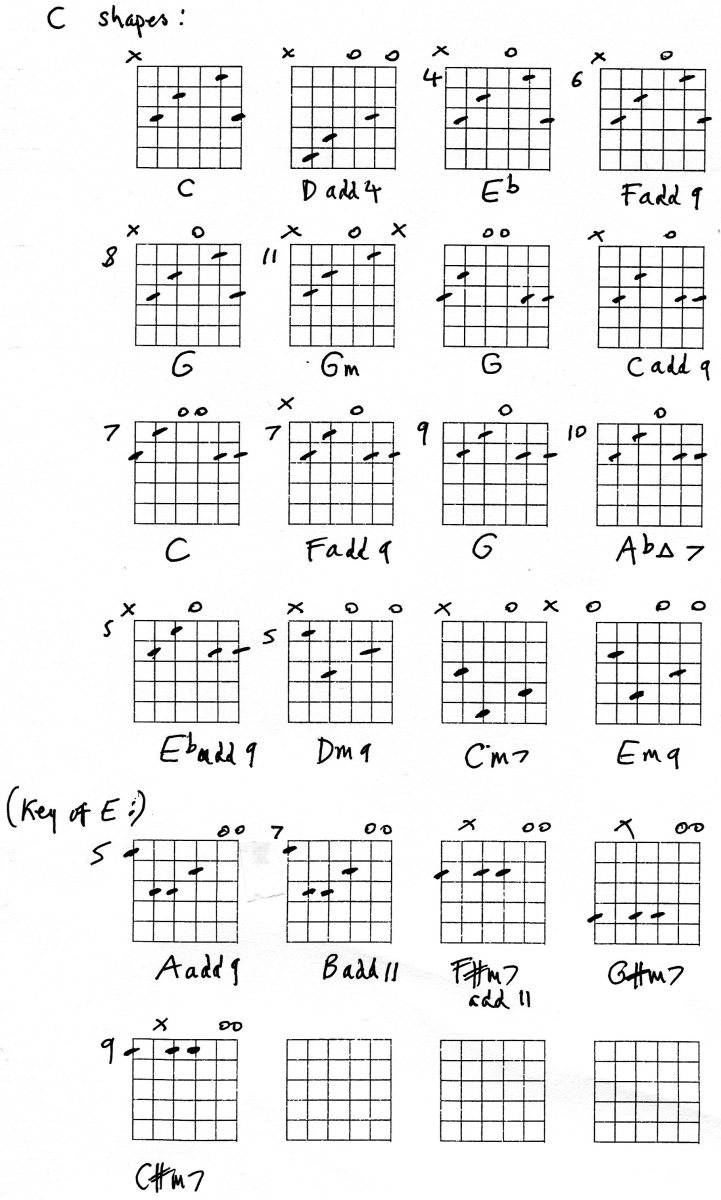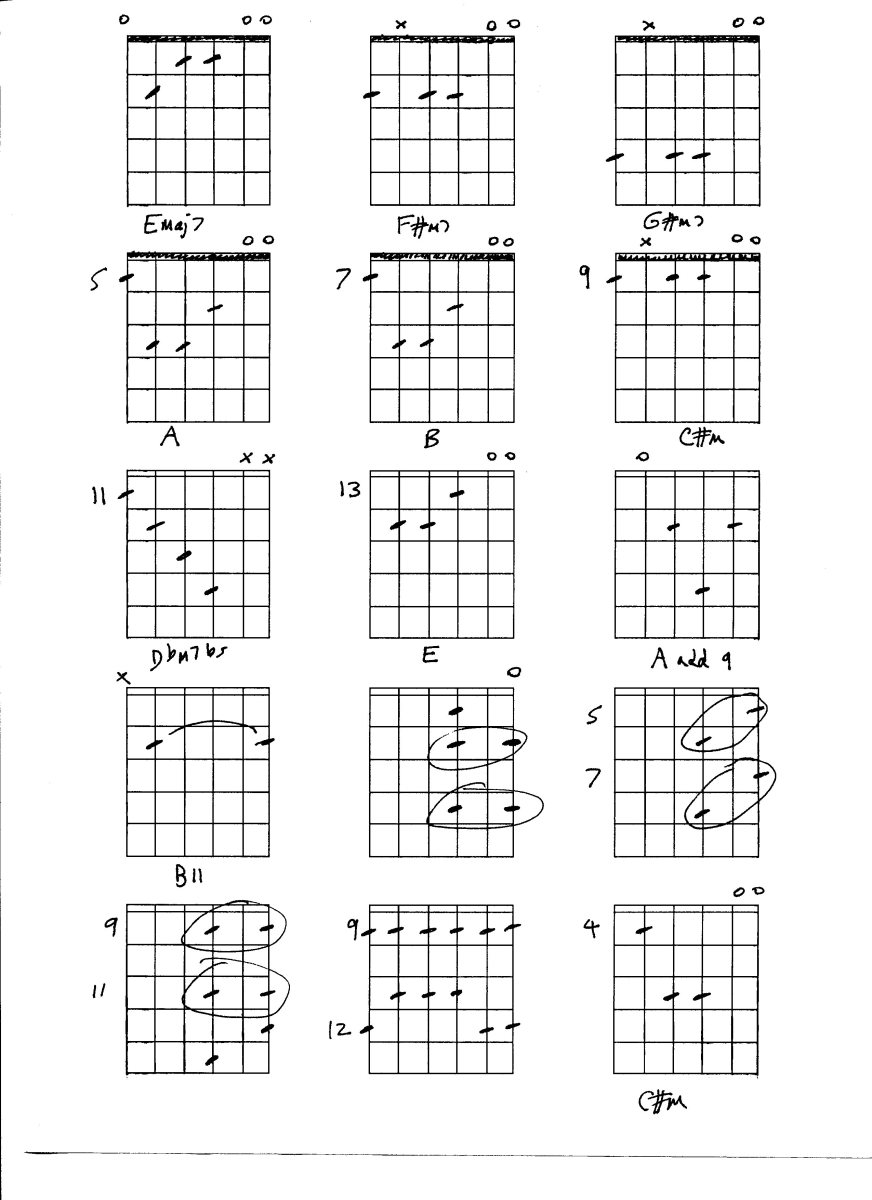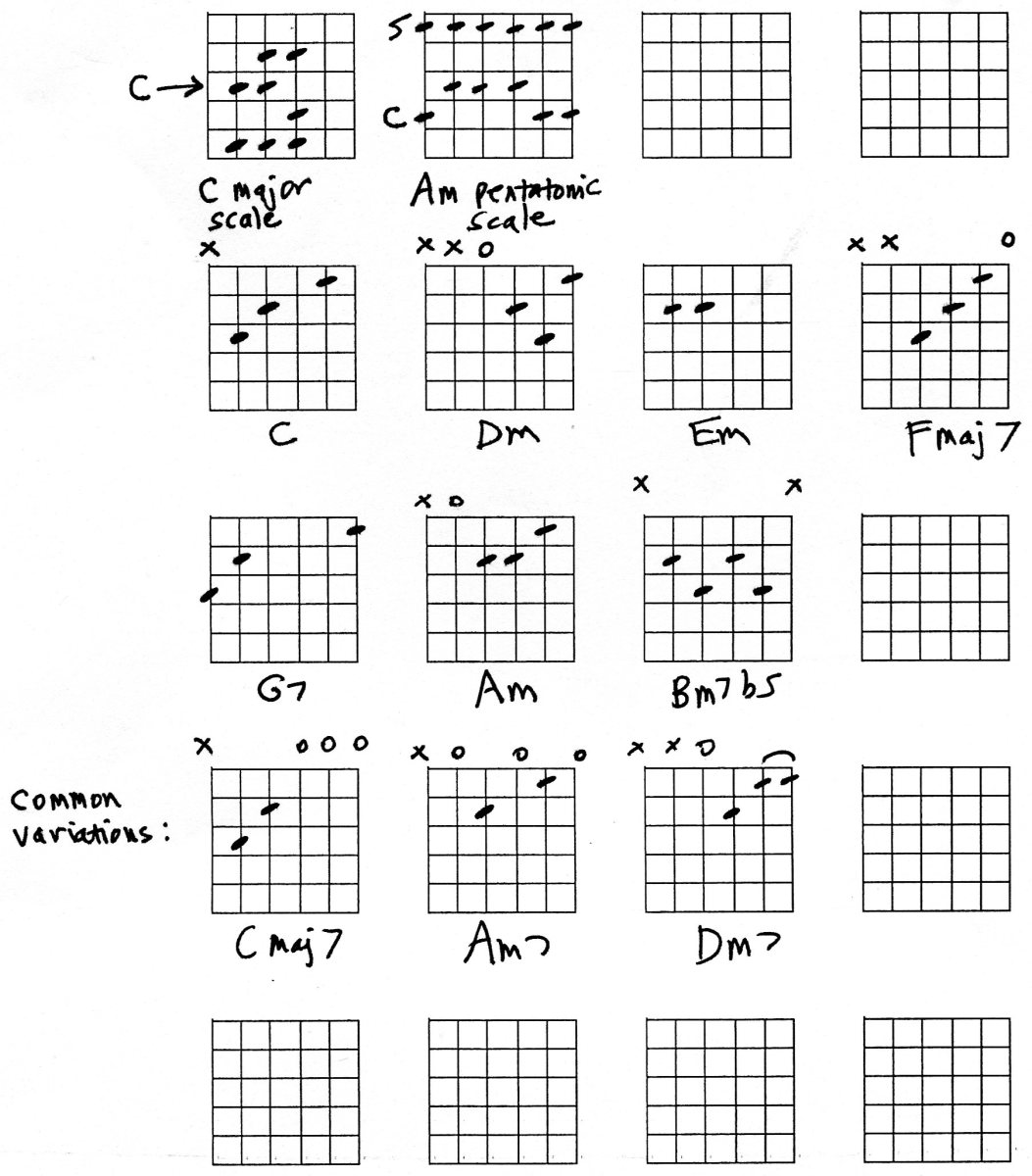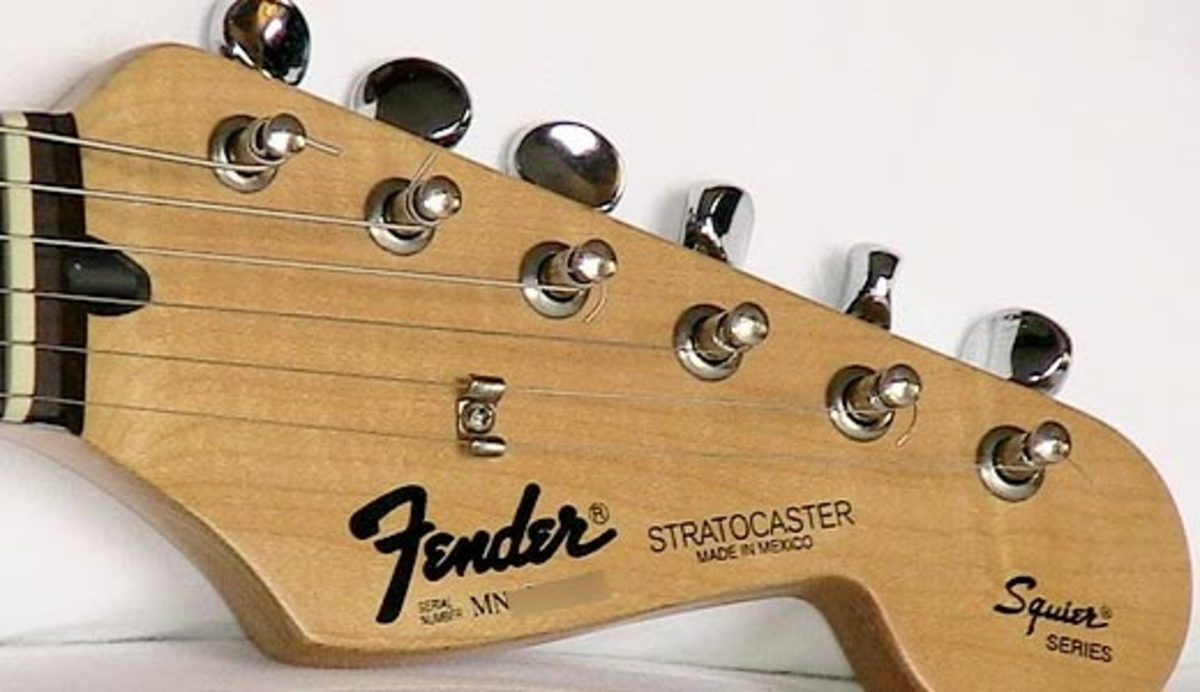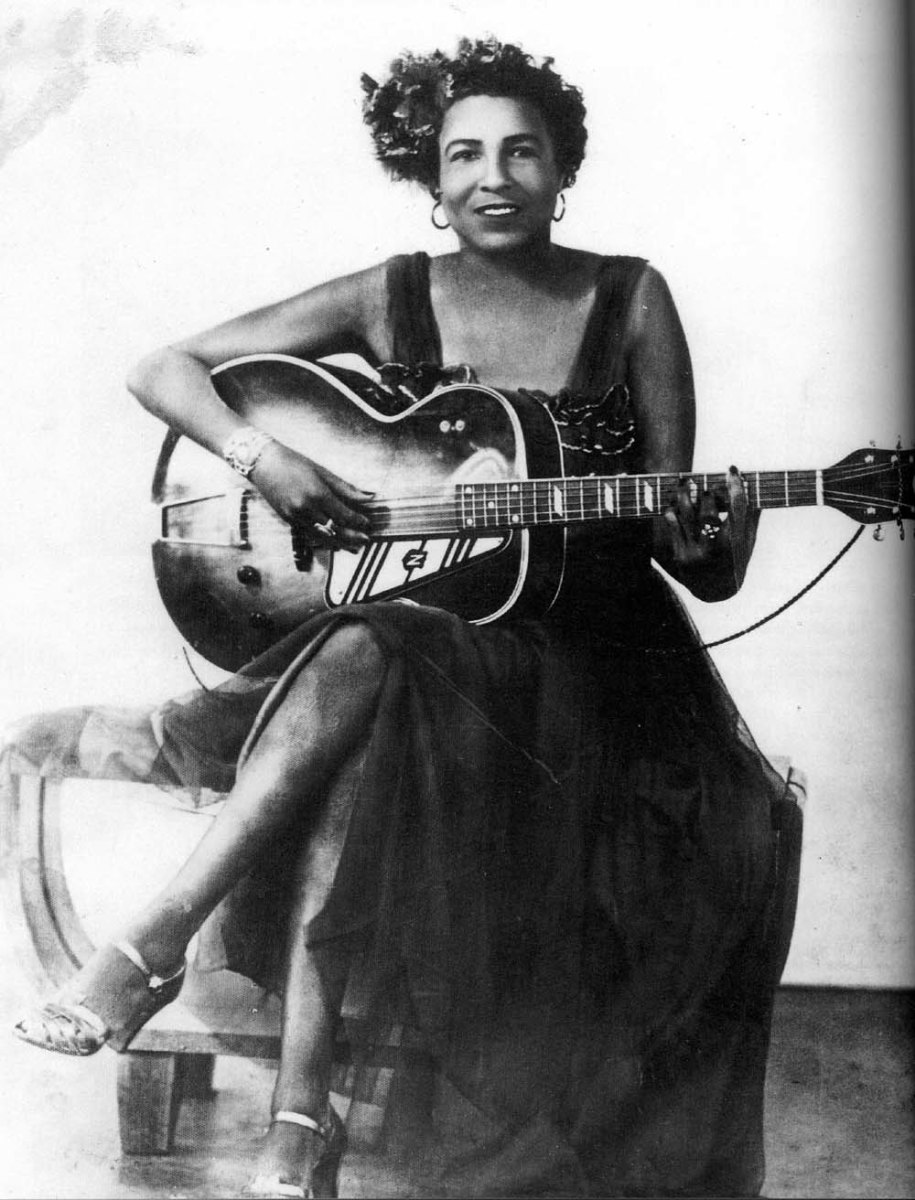Guitar Chords and Theory
Chords lesson - minor chords
The chart below contains a lot of information about the way that guitar chords are connected, and the way in which they are used in the songwriting process. Although it's guitar-orientated, all the theory works fine for piano and keyboard too. If you check out my hubs on keyboard and piano, there are photos showing the easy chords, and you might find that it's a lot easier than you think to learn piano with this method.
- Learning at least some of this material will enable you to learn songs much faster and more easily, on any instrument, but definitely on piano/keyboard and guitar.
- You will also find it easier to work out songs from records
- It will help in improvising and playing solos, in fact it's essential for that.
The first example (4 grids) shows the minor chords in the key of C - if you look at the complete list from the harmonised scale at the bottom, you'll notice that these are chords ii iii and vi from the sequence.
If you use just these chords, you will get the sound of A minor, which is a sad and somewhat melancholy sound, but not as sad as Dm - according to Nigel Tufnel of Spinal Tap.
A great example of a song in Am using these chords is Ain't No Sunshine by Bill Withers, just add a quick G7 chord, or a G bass note.
The last chord E7 is often substituted for the Em chord, as it leads back to Am in a stronger and more definite way. Technically, it has changed key as it now has an added sharp note, but this doesn't seem to bother anyone. A useful tip: anytime you find an E7 chord in a song, it's very likely to be followed by an Am chord, or an A chord. If you can predict chord changes before they happen it can really help you change chords quicker.
Guitar Chords - minor chords in different keys
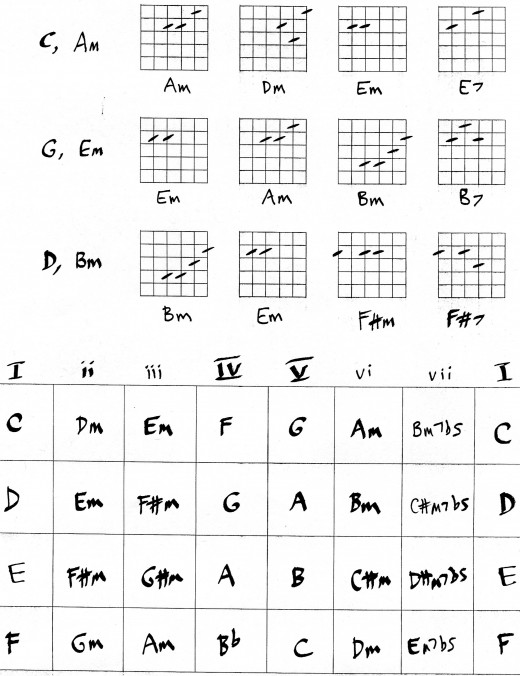
More keys
Next we have the key of G, relative minor key is Em, which is why the Em pentatonic scale fits anything in the key of G. The I, IV and V chords in this key are G,C and D.
So any song in the key of G (and there are literally thousands of them) will use chords from this list. Other chords may be added, but these are the vital or diatonic chords.
Em pentatonic scale uses these notes:
String 1 and 2 : 3, 0
Strings 3, 4, 5 : 2, 0
String 6: 3, 0.
By moving this scale pattern up and down the neck, you can play pentatonic scales for all the other keys, so it might be easier than you think to play lead guitar.
As a general rule, you can always replace a minor chord with a minor 7th chord(m7) and in most cases it will really enhance the sound. In fact, this is really one of the easiest ways to make your guitar playing sound more sick and professional, I mean slick and professional. I haven't shown them here as I want to keep it straightforward.
Key of D
The minor chords in the key of D are shown, in an easy format - you could use barre chords if you can do them. Again, the final minor chord is often changed to a dominant seventh - Hotel California is a good example of this in practice - it gives a more Spanish or Flamenco flavour to songs.
The last two lines, for the keys of E and F, are there to show that the pattern is the same for every key. E to F is moving up one semi-tone, or one fret, so all the other chords follow suit.

